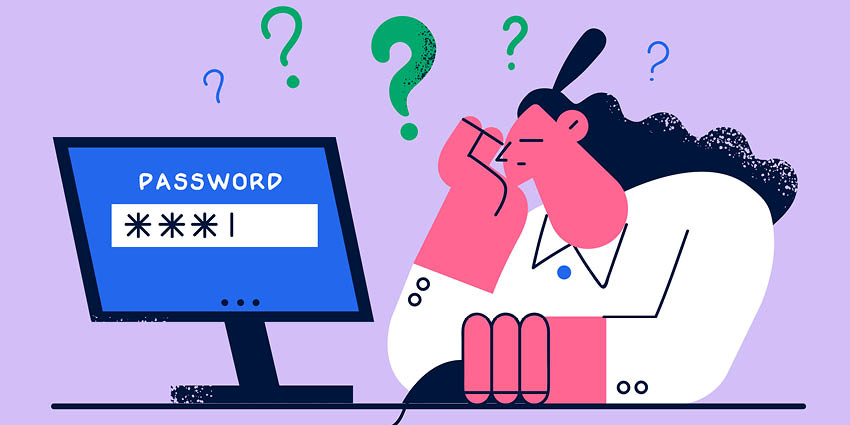Contact centers are particularly vulnerable to data breaches, given the large volume of sensitive information it handles and shares every day.
The security of this data is a critical concern for safeguarding CX and business outcomes. Yet, many operations still use security questions. Now, there are many better ways to protect clients.
What Is the Role of Security Questions in Contact Centers?
Security questions hinge on the bases that only the individual themselves will know the answers to personal questions, such as: what is your mother’s maiden name, eldest sibling’s middle name, or favorite food?
However, that does not always work. A family member or even an unpleasant ex-partner who knows the individual well can answer most of these questions accurately. What’s more, much of this information is now available to fraudsters via a glance at victims’ social media accounts.
Brute force cyber attacks are also common, where fraudsters use trial-and-error to guess correct answers and details about a person’s background, aided by social engineering.
Additional Risks Around Security Questions
Since the compromise of many customer databases has hit the headlines in recent years – including a recent alleged breach at Coca-Cola – many customers submit fake answers to security questions.
When questioned later, they have problems responding since they cannot recall which response they had provided. When customers cannot reset their answers, it creates a slew of issues and inconveniences.
Instead, these customers must rely on a support team to authenticate their identity, which is often an arduous process when using antiquated security systems.
Moving Away from Security Questions
As data breach attempts become increasingly sophisticated, companies must move away from security questions as their only authentication method. They are out of date, cause issues, and frequently contain answers that may change over time.
Many websites now use SMS or email-based permission codes. Doing so checks that the person who has access to the customer’s details intends to log in.
Such a technique is simple but often effective in deterring fraudsters. Here are five more excellent examples.
1. Multi-Factor Authentication
Multi-factor authentication requires a user to give two or more verification factors to receive access to a resource such as an application, online account, or a VPN.
A strong identity and access management policy must include one or more verification criteria in addition to a username and password, reducing the chances of a successful cyber-attack.
The system then requests further information for verification – i.e., another factor. One-time passwords (OTP) are one of the most typical elements of multi-factor authentication.
2. Stronger Access Controls
At its most basic level, access control is the selective limiting of data access. Discretionary Access Control (DAC), Role-Based Access Control (RBAC), and Mandatory Access Control (MAC) are the three basic types of access control systems.
The MAC is the most powerful of the three. It enables a remote access server to send a user’s login password to an authentication server, determining whether access to a specific system is possible.
3. Robust Network Security
The ability of an IT system to withstand clever and goal-oriented attacks – i.e., sophisticated, persistent threats – is known as “cyber robustness”.
Privilege escalation is a typical attack in which fraudsters gain unauthorized access to systems inside a security perimeter, allowing the attacker to gain more power, such as access permissions.
A well-built network with adequate security measures reduces network downtime, boosts productivity, and eliminates losses caused by cyberattacks.
4. Upgrade Contact Center Systems
Using up-to-date technology keeps data safe from cyber-attacks. Crucially, the software should comply with current security best practices, with patches deployed to fix specific security flaws and vulnerabilities.
Such a process is more straightforward when an organization uses cloud-based contact center software, where security updates are delivered remotely and without manual effort.
Indeed, moving to the cloud has several security advantages; the most notable is that data becomes protected by a team of security professionals and independently verified security standards.
5. Next-Gen Authentication Alternatives
Companies can now leverage dedicated apps that use voice-based authentication or biometrics (facial recognition, fingerprints, or iris recognition). If a corporation has a specialized app, it can link biometrics results directly to a customer’s profile.
A contact center voice biometrics app is a particularly strong example, as the technology authenticates the customer while they speak, cutting out laborious identification and verification (ID&V) processes.
Single sign-on connected with other online platforms is also a progressive idea. Customers can link their social networking accounts, email addresses, and internet messaging services – such as WhatsApp – to create a unique profile within the company.
The Bottom Line
As customers prioritize privacy and security, companies are moving away from security questions. They are vulnerable to exploitation, outdated, and frequently include sensitive information. As such, companies must work to improve client authentication systems and streamline ID&V processes for better customer experiences.







